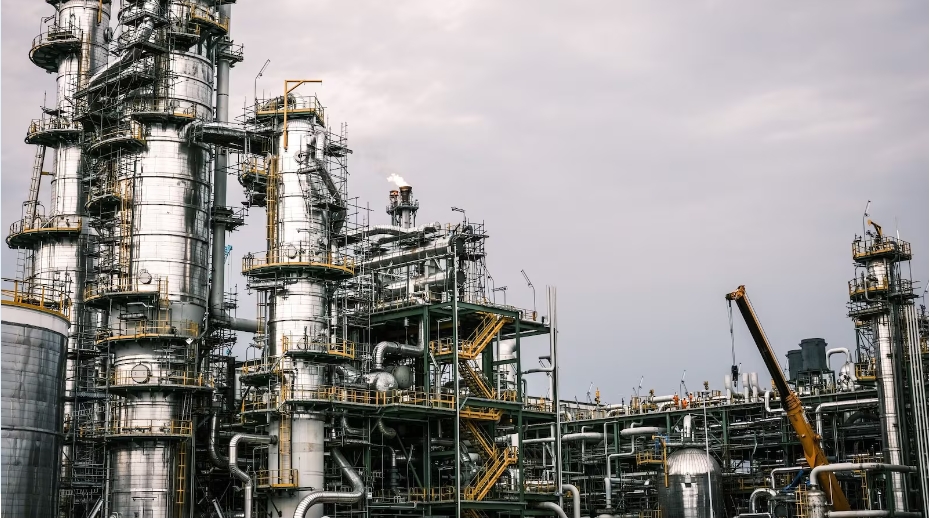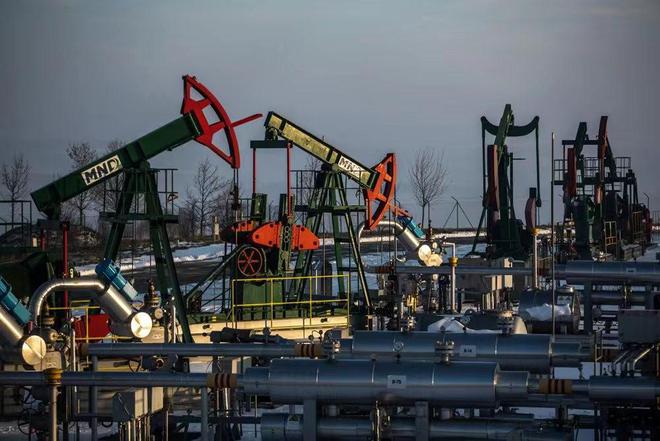The Taiwan government have passed the latest emission regulation which requires that the dust emission from the stack to be less than 28 mg/Nm3.
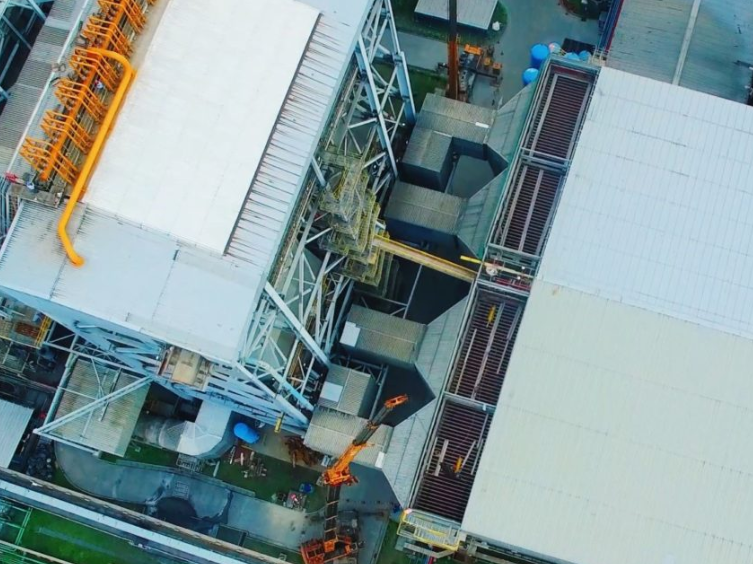
With an installed capacity of 1,320 MW, the coal-fired power plant situated in eastern Taiwan is regarded as the fourth largest coal-fired power station in Taiwan. The power plant is directly confronted with the stringent emission regulation stipulated by the government which requires dust emission through the stack to be less than 28 mg/Nm3. Meanwhile, the designed dust emission of this coal-fired power plant is 48 mg/Nm3 with occasional excessive dust emission of more than 100mg/Nm3. The tightening of stack emission regulations have motivated the plant operators to take steps to optimize the ESP performance in order to achieve zero emission and to be more environmental friendly.
The plant has electrostatic precipitators (ESPs) installed as its air quality control system (AQCS). An ESP is a robust equipment commonly employed in heavy industries to remove suspended dust particulates from the flue gas before being released from the stack and thereby ensuring that clean air is released into the atmosphere. There are two ESPs employed in this plant.
The problem
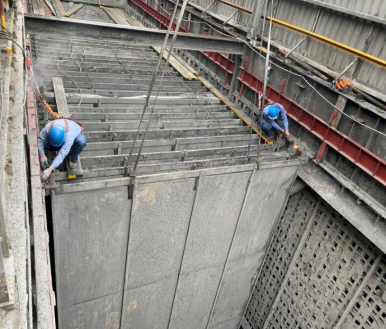 Removing old plates
Removing old plates
The ESP structure are in bad conditions and the reliability of the internal components have decreased, leading to higher dust emissions. The major problem of the ESP is that the collecting plate (CP) and discharge electrode (DE) rapping system in the original ESP design have poor rapping intensity and thus thick dust accumulation on the CP/DE. This led to low dust collecting efficiency and thereby occasional excessive dust emission of more than 100mg/Nm3. Also, bent CP and DE wires due to structural issues have been removed in earlier ESP maintenance outage which led to smaller collecting area. Dust accumulation on the inlet gas distribution (GD) screen plates affect the gas distribution, leading to uneven gas flow and thereby poor ESP performance. The quality of the ESP internal components are poor and needs to be replaced every two years.
The poor ESP performance led to the over exhaustion of the flue gas desulfurization (FGD) system and thereby worsening the condition of the FGD. The plant has FGD system installed which is used to remove sulfur dioxide (SO2) from the flue gases. Also, the duration of desulfurization in the FGD tower is not enough due to the short tower height and thereby leading to insufficient treatment of flue gas.
The environmental impact due to the poor ESP performance is also one of the major concerns.
Phase by phase mega revamping
A series of inspections and tests were carried out in order to gain full knowledge of the ESP’s operating conditions including the gas distribution, gas volume, electrical readings, fuel type, etc. Accordingly, the modification of ESP’s mechanical and electrical components for optimal ESP collecting efficiency is planned out.
The phase by phase mega revamping project is proposed to enhance the plant’s ESP efficiency in order to increase equipment reliability and collection efficiency to ensure that the final dust emission will be less than the government’s stipulated regulation. The mega revamp project includes the designing, fabrication, supply and installation of the newly designed parts.
The mega revamping will comprise of four phases including the revamping of both the ESPs, the installation of Wet Electrostatic Precipitator (WESP) and mechanical & electrical maintenance of the ESPs.
The mega revamp project is customized based on the limited outage duration planned by the power plant for each year in order to achieve the plant’s emission requirement.
The first phase: new design
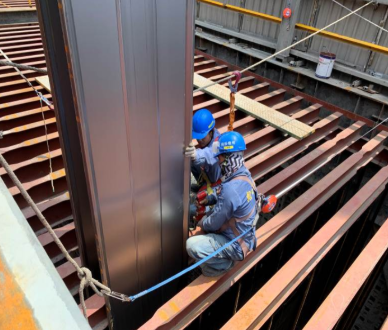 Installing new plates
Installing new plates
The ESP has six fields, each comprising of four separate chambers. The OEM of both the ESPs employed in the plant are Lodge Cottrell ESP. For the electrical part, the T/R unit installed is the France Transfo T/R set. In order to increase the collection efficiency of the ESP, the mechanical parts in the first (1st) field will be modified to GE design. The new GE design spiral discharge electrodes with round edges impart uniform concentrated corona power to overcome any corona quenching affect. This new DE design helps in optimizing the total power input to achieve the highest collection efficiency. For high resistivity ask like coal ash, it is important to have uniform corona generation rather than the peak corona generated with spike DE. The collecting plated are redesigned to increase the collecting area.
Also, the electrical part (T/R unit) will be modified from the original France Transfo to the new GE SIR 4. Since only the first (1st) field is modified, a total of four units of T/R sets will be upgraded. The new high frequency T/R set has higher collecting efficiency and can be more flexible in operation setting. This high frequency T/R set, along with the new mechanical design offers the advantage of producing higher secondary current at lower secondary voltage, thereby higher electrical at reduced cost.
The modified rapping system allows for easy maintenance, better rapping intensity and increased reliability.
The first phase of the mega revamping is completed within forty five (45) days of outage. The job scope of the first phase includes:
· The replacement of all the mechanical parts in all the four chambers of the first (1st) field to increase the collection of dust particulates in the first field itself (as the first field contributes to nearly 80 percent of the dust particulate collection);
· Maintenance of the flue gas desulfurization (FGD) system and addition of buffer tank to increase the duration of desulfurization; and
· The cleaning and maintenance jobs in the following five (5) fields.
The challenges encountered during the mega revamping were cold weather with strong winds during rainy season, tight working hours and space constraints.
ESP improvement
After the first phase of mega revamping, an acceptance test was carried out and the result demonstrated that the dust emission have been successfully reduced to an average of below 20 mg/Nm3 at 6 per cent O2 which is far lower than the emission level of 32 mg/Nm3 (after the first phase of revamping) as guaranteed at the start of the project. An emission level drop to 3 mg/Nm3 at 6 per cent O2 is guaranteed after the final phase of mega revamping.
The secondary voltage/current have improved from 110 KV/1000mA (before revamping) to 85 KV/2100mA (after revamping).
The results show that the dust emission have become stable and successfully meet the plant’s expectation which is to reduce and maintain the final dust emission to below the government regulation.
About the authors: Anton Halim graduated from National Taiwan University of Science and Technology with degree in science mechanical engineering. He is an expert in the mechanical aspects of preparation, procurement, project management and construction of power plants.
Felix Lin is a technical consultant with more 30 years of engineering experience. He specializes in project management, EP design drawing and cost management.

